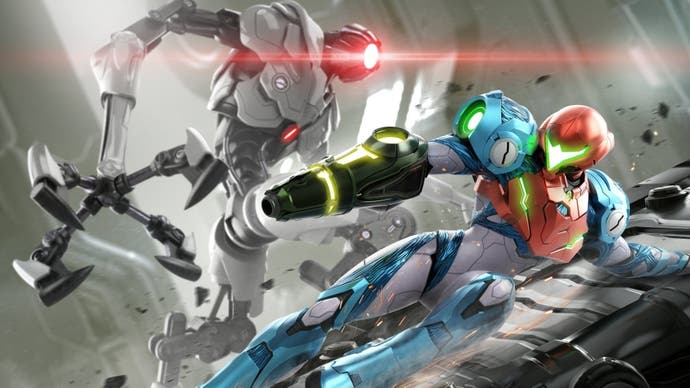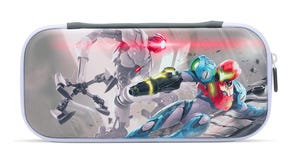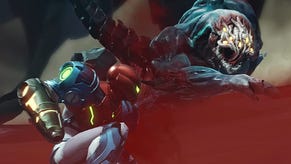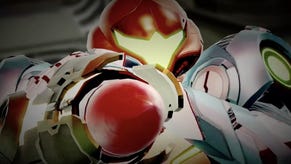Metroid Dread looks like it could be the real deal
Hands-on with Samus' proper return.
When you've been waiting some 15 years for a game, I think it's probably fair to express a little bit of trepidation going in. Metroid Dread was first conceived as a Nintendo DS sequel to Metroid Fusion, back at a time when not only had the series served up a 2D offering that could stand shoulder-to-shoulder with Super Metroid, but we were also in the midst of the brilliance of the Prime series. Whatever your take on the likes of Metroid: Other M, Federation Force or Samus Returns, it's fair to say that the series has been far from its prime ever since.
You can forgive long-time Metroid fans going into the first original game since 2010's somewhat divisive Other M for having some nerves, then. But, after a couple of hours with the opening of Metroid Dread, I have wonderful news. This one looks set to be the real deal - a classic 2D Metroid, delivered with some serious production values and all the polish you'd hope for from a game that's helping launch Nintendo's latest Switch hardware, next month's OLED refresh.
Set shortly after the events of Fusion, Dread sees Samus once again responding to a mysterious signal beckoning her down to a hostile planet surface in her latest attempt to wipe out the X parasites. And, once again, events conspire to strip her of all her abilities - this time by way of a powerful figure donned in Chozo armour you encounter on the surface of planet ZDR, who subsequently defeats Samus in what leads to a bout of 'physical amnesia'. The result is Samus waking up groggy-headed and effectively empty-handed deep in the bowels of the planet, tasked with working her way up to her ship that's waiting abandoned on the surface as she rediscovers her old powers and a few new ones besides - a sort of neat reversal of Super Metroid's adventure which had you burrowing down into the planet Zebes.
After so many years, the most comforting thing about those first few steps in an all-new Metroid game is how discomforting it is, the eerie atmosphere and sublime sense of loneliness that marks out the very best of the series present and correct in Metroid Dread. The two hour section we played through highlighted the opening areas, the chilly isolated Artaria giving way to the more industrial, furnace-fuelled Cataris where lava flow must be redirected to find your way forward. Exploration in this particular Metroid has a brilliant new twist, however.
As its name suggests, this is a Metroid that leans into that suspense and subtle horror, the big new mechanic here being the introduction of Emmis - or extraplanetary multiform mobile identifiers, if you must. Think of them a bit like Resident Evil 2's Mr. X, near indestructible enemies that track your position and hunt you down, and whereby your only real option - early on, at least - is running or hiding should they be in the vicinity. Oh, and it seems there are more than one of them, making exploration of the planet ZDR a very nervy thing indeed.
The first Emmi you encounter isn't quite fully operational, fizzing and sparking on the floor as you find it with its armor seemingly absent. It offers a gentle introduction to the enemy that defines Metroid Dread, but the fully-armoured versions that follow are formidable things, taaking you down in a single hit should they get within reach. Thankfully Emmis only patrol certain areas, neatly marked on the map and by a subtle draining of colour when you enter their zones - though of course it's these zones that are often home to the gadgets, abilities and various devices you'll need to progress your adventure. It gives Metroid Dread - in those first two hours, at least - a brilliant rhythm as you go from free-form exploration to extended moments of peril, working to outwit and outmanoeuvre the Emmis as they hunt you down and you try to sneak past.
Like Samus Returns before it - developer Mercury Steam's remake of 1991's Metroid 2, and what now feels like something of a dress rehearsal for this much grander Metroid outing - the combat has a neat ping to it, so when you are forced into action it feels pretty damn great. Smaller enemies have a tendency to rush Samus, opening up a window for a quick counter that exposes them for quick one hit kills told with a delicious camera zoom and chunky hit pause. It's the recommended way to deal with cannon fodder, too, as takedowns achieved this way lead to more resources - missiles or all-important health - being dropped. And, of course, it looks damn awesome too.
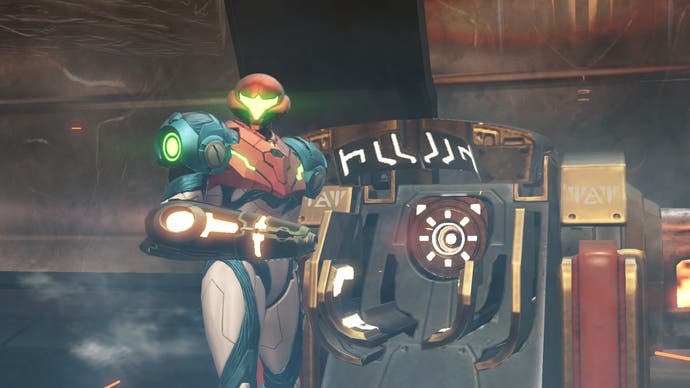
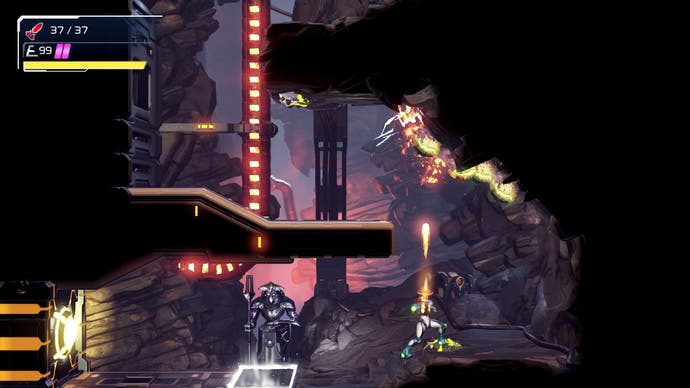
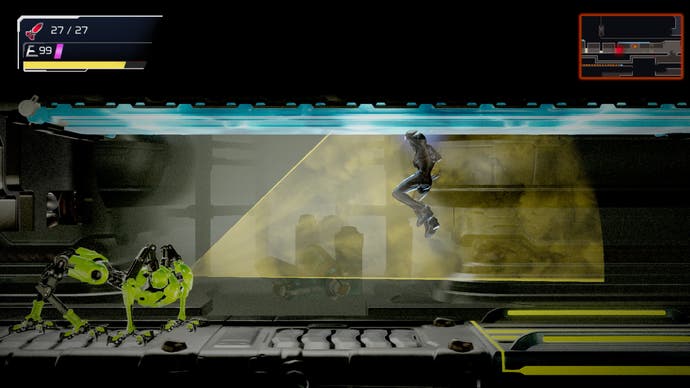
Even before you've unlocked any of the plentiful upgrades Samus has a lightly extended arsenal to help her cause. Free aim is now possible when running, and even before you get the morph ball there's a diving slide that means you're able to slide under certain small gaps - a vital move when trying to escape the grasps of certain Emmis early on, and a pretty stylish one too as you slink away at the last second.
Some later unlocked abilities help your fight against the Emmis too, such as the Phantom Cloak which effectively opens up a stealth option. Click in the right stick and Samus will be fully cloaked, the only downside being that her movement is restricted, and that the suit's power is also limited - run it down and it'll eventually start sapping away at your health. It makes for deliciously tense adventures, and it's a delight to see Metroid lean into the horror aspect that's always bubbled under the surface of the classic games.
It is possible to down the Emmis eventually, thanks to occasional access to an Omega Cannon that can be unlocked in each Emmi zone, a sort of one-shot weapon that's your only resort against these enemies. Not that this saps any of the tension - once you're able to go weapons free the encounters maintain that suspense thanks to how you have to charge up the cannon before unleashing it, the view clipping smartly to an over-the-shoulder perspective as you line up your shot (and a welcome borrowing, it would seem, from the much-maligned hybrid outing Metroid: Other M).
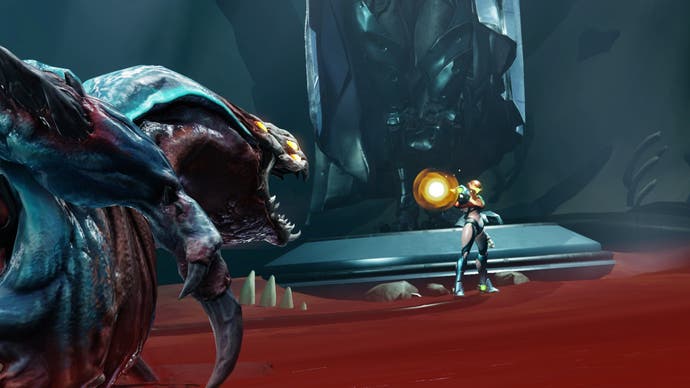
There are other welcome tweaks here and there - such as a new map that's more useful than those seen in previous entries, letting you not only place waypoint markers but also highlight all doors of a certain type. Get access to the charge beam, for example, and you'll be able to highlight all the doors you've encountered that need that beam to unlock, taking so much of the pain out of the backtracking typically associated with the series.
It's enough to make this a perfect entry point for the series should you have never played a Metroid game before - though given the ubiquity of the Metroidvania genre it lent its name too, you're surely to have played one of the countless games inspired by Metroid such as Hollow Knight, Axiom Verge, Dead Cells or Ori. Being able to return to the originals is more than a history lesson, though - it's a chance to see one of Nintendo's most graceful, hard-edged and stylish series, and one that had been neglected for all-too-long, take its place back in the limelight.
For returning fans like myself who still play through Super Metroid once a year, the most heartening thing after two hours with Metroid Dread is how it retains and restores so much of the magic of the series. It's a respectful retread, but also one that's bold enough to throw in smart new ideas of its own, adding an extra layer of tension, horror and atmosphere that feels simply electric. Right now it looks like this has every chance of living up to Metroid's legacy, which would really be no mean feat at all.
